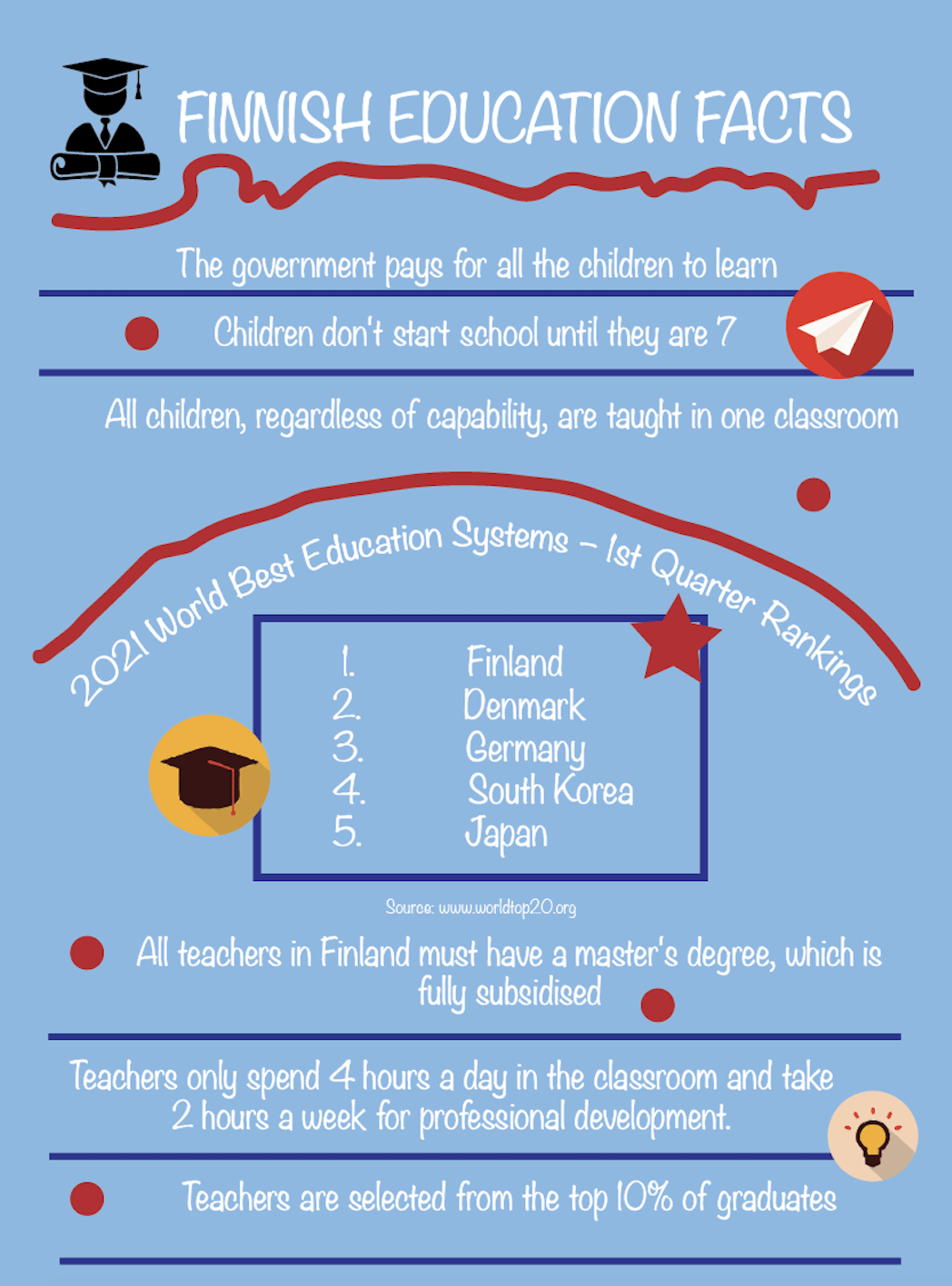In the first week of my classes at Haaga-Helia in Helsinki I was really confused. Classes were different then to my home country, Georgia. Lecturers were not explaining everything, just telling some introduction to the topic and then we had to read, make a research, or watch tutorials by ourselves.
“I have made note that students common from countries with more traditional, conservative education systems are quite bewildered at first. They feel that the teachers here do not “do their job.” Such students find it somewhat challenging to get started in a system that does not impose heavy restrictions on them.” - Kevin Gore, Lecturer of Branding and Marketing Communications at Haaga-Helia.
So, briefly it was unrealistic and super strange, but time by time I realized that during this research I was finding a lot of different information which was interesting for me. I found it fun and useful because I think no student can listen to a lecturer who is talking for 2 hours and remember anything.
This was my first interest in Finnish education system. I did a small research to understand each step and level of the education that a person passes here in Finland.
“In order to succeed we need everybody on board. This is kind of an ideology behind it. To make sure everyone is skilled.” – Maarit Haukka, representative of Haaga-Helia – university of applied sciences.
First and the most important part of the story is that education starting from the kindergarten to high education is FREE FOR EVERYONE! Each person can get equal education no matter income or state. Also, lunch in school and kindergarten are free as well.
“Education is available for all. To look at this from the perspective of an individual you can always trust Finnish education. You don’t have to do a lot of comparison between what is good education and what is not because you trust that it is all good, it's kind of mutually certified.” – Maarit Haukka, representative of Haaga-Helia – university of applied sciences.
To start with, Finns do understand how important early years are for human development. Human learning does not only take place in our brain, what children do plays a role in how they learn. Because of this in Finnish kindergarten spending quality time outdoor is important. Almost, each kindergarten has outside attractions for children, where they play different games.
What is good for children also is that Helsinki is full of parks and forests. Teachers make excursions in the outdoor places to have more colorful days and a more funny learning process.
Another important thing is that they have play-based learning. There are several types of plays such as digital play, active play, creative play, social play, and free play.
What I liked the most in the structure of kindergarten is that there are mixed age groups, so older children hey must be role models and to look after smaller ones.
Finnish education model combines emotional intelligence with academic competence and actively encourages the participation of the children itself.
Following a comprehensive approach, early education in Finland strives to develop mental, physical, social, and emotional skills of children.
Unbelievably children on each education level have minimal homework. Finns think that children should have a social life and for example days in the first years of school are shorter to leave more time for hobbies and other activities.
For each teacher it is mandatory to have a master's degree, which means that they are highly qualified, both academically and pedagogically. For example, if you want to become a primary school teacher in which case you will teach multiple subjects for elementary school, you must apply for the specific master’s program. Which consists of Intense learning including practice and training.
To become a secondary school teacher, you will need to be skilled in your subject. If you are teaching math, you should have a master's degree in and plus one-year pedagogical training.
In Finland, you are not able to become a teacher without this specific teacher training.
“The reason why teacher’s profession is attractive is that it’s considered as an extremely rewarding profession content-wise. There is a lot of respect for teachers.” - Haukka Maarit, representative of Haaga-Helia – university of applied sciences.
“We are fortunate that teaching is still considered a valued profession and it is not uncommon for young people to say that they want to become teachers and people who have worked long in a certain field often become teachers later in their careers in order to share their knowledge.” – Kevin Gore, Lecturer of Branding and Marketing Communications at Haaga-Helia.
To continue with the university level as I mentioned everything is different from other teaching methods. Classes are very interactive with not much assignments but highly informative.
“The total assessment of the course should be more heavily based on assignments and other written work/projects instead of an exam, which is the so-called “traditional” approach as most people learn better through doing and not simply studying for one, all-encompassing exam.” -Kevin Gore, Lecturer of Branding and Marketing Communications at Haaga-Helia
After all these steps and proper education in any fields Finns are people who have a good life and work balance. Finland is the only country where students have both a high reading ability as well as high life satisfaction.
“The main success, particularly for students, is that their rate of employment is high (around 80%) and that the education is designed around skills that make them employable. Employability is a foundation for our education design, but we don’t forget academic rigor either.” – Kevin Gore, Lecturer of Branding and Marketing Communications at Haaga-Helia
It is not surprising why Finland is the happiest country in the entire world.
According to Forbes, Finland has low levels of corruption, a well-functioning democracy, and an instilled sense of freedom and independence. I think that the basics of creating this successful country is education and Fin do understand it well.
